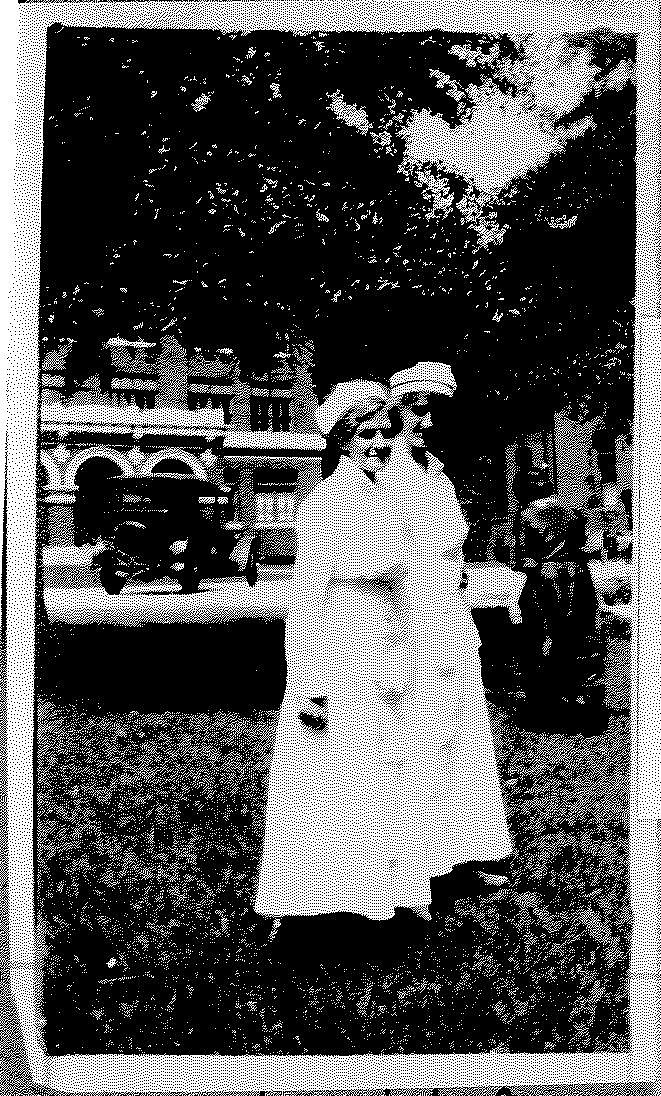Opportunities for nurses expanded rapidly during the first two decades of the 20th century. Schools of nursing opened, and graduates found employment in hospitals, physician offices and the community.
During World War I, nurses deployed to Europe with the Army and the Red Cross, serving on the front lines and in military hospitals.
By 1920, Erlanger School of Nursing graduates numbered 130. They found employment at Erlanger Hospital, as well as private institutions, including Ellis-West Hospital (opened 1902) and Pine Breeze Sanatorium (opened 1919 for the treatment of tuberculosis, a major cause of illness and death).
At the same time, nursing education standards were changing. In 1913, the Erlanger School of Nursing program increased to three years. Admission requirements included one year of high school in addition to statements from a minister attesting to the applicant's moral character, and a doctor and a dentist certifying their health. Students attended classes three to four hours daily, followed by 12 hours of hospital duty. In 1921, the hospital shift was reduced to eight hours.
During the flu epidemic of 1918, Hamilton County experienced more than 7,000 cases and many deaths. The dead included several nurses, including Erlanger graduate Emma Igou.
The 1920s saw the expansion of nursing opportunities as more patients were admitted to hospitals. Formerly housed in a wing of Erlanger, student nurses and staff members were moved to a new residence hall in 1924. Student nurses were high school graduates, white, single and female. They were required to live in the nurses' residence.
During this time, women often chose between a career and marriage. Many nurses remained unmarried. Erlanger School of Nursing welcomed its first married student in the early 1960s when Charlotte Boatwright won her battle for admission.
To become a registered nurse, a graduate must pass the state Board of Nursing examination. Tennessee instituted the examination in 1913, thus assuring minimal standards of nursing competence.
Nursing uniforms evolved over the years. Student nurses wear distinctive uniforms signifying their student status. The white uniform was standard throughout the profession for many years. Evolving with the fashion of the time, "hospital whites" gave way to the more practical scrubs in the 1980s.
Bestowed after the first year of nursing school, the cap was distinctive to each school. Sometimes taking unusual forms, the school cap with the double black band that many nurses continued to wear signified a graduate nurse. The cap gradually lost favor by the 1980s. Many schools gave graduates navy blue wool capes. This practice also fell out of favor. However, graduates even now continue to receive a pin, unique to their school, in a ceremony celebrating their entrance into the profession.
The 1930s saw scientific advances in medicine and nursing care. T.C. Thompson Children's Hospital opened in 1929. Polio epidemics in the 1940s and 1950s presented additional challenges to medical personnel.
World War II brought increased demand for nurses. By early 1944, more than 219 nurses from Tennessee were serving in the military. Of these, 107 were from Chattanooga. Created by Congress, the Nurse Cadet Corps helped to fill the need. Erlanger's program opened in 1943 with 64 cadets.
The post-war years saw dramatic changes in medicine and nursing. In 1944, Erlanger student nurses began taking courses at the University of Chattanooga. Still, nursing salaries were low. In 1955, a head nurse made $405 per month, while new graduates made $204 monthly.
The opening of Memorial Hospital (1952) and Parkridge Hospital (1972) increased the demand for nurses. Practical nurses (LPNs) were first licensed in 1955 in an effort to address the chronic nursing shortage.
Since its founding, Erlanger had maintained separate wards for Black patients. However, Black physicians were never granted hospital privileges. Black physicians, like Dr. P.A. Stephens, repeatedly petitioned city government for the right to attend their hospitalized patients. In 1945, the Erlanger Board of Directors purchased the West-Ellis Hospital on Ninth Street for a 61-bed unit. Carver Hospital had a Black staff with white Erlanger management. Nurses trained at Walden Hospital or all-Black colleges. Erlanger Hospital and its School of Nursing desegregated in the late 1960s.
During the past several decades, nursing education moved from hospitals to universities and community colleges. Although still largely female, the profession now has many men. Nursing salaries improved as specialization, advanced practice degrees, greater autonomy and increased use of technology provided opportunities within the hospital and other community settings.
Though nursing practice and education continue to evolve, nursing remains the most trusted profession in the United States.
Gay Moore, a registered nurse, has been a nurse for 34 years. For more information, visit chattahistoricalassoc.org.
